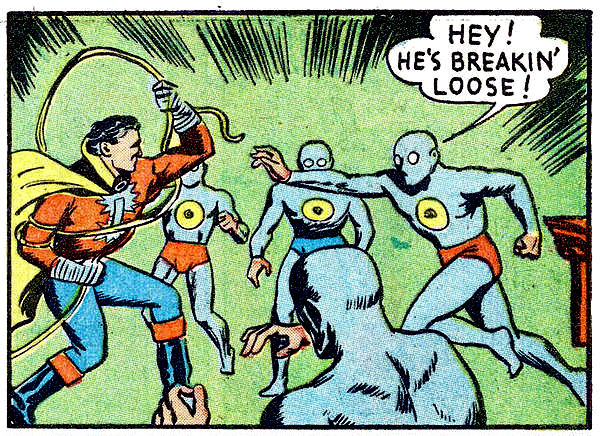We are slipping out of June with a couple of stories from one of the first horror comics I ever owned. I got it in a trade circa 1959, and it has been in my collection since.
I have shown the Dick Briefer-drawn “Somewhere Lurks a Thing!” before, in the early days of this blog. These are new scans. “Ted’s Head” has art credited by the GCD to Larry Woromay ? by way of the Atlas Tales site. I think Larry did a pretty good job showing headless people without the gore. But it wouldn't have satisfied the Senate committee and their hearing on comics. They didn’t buy Bill Gaines’ decapitated head cover of Crime Suspenstories #22 as “being in good taste for a horror comic.” For the record, I think “Ted’s Head” is in good taste for a horror comic.
More about →
I have shown the Dick Briefer-drawn “Somewhere Lurks a Thing!” before, in the early days of this blog. These are new scans. “Ted’s Head” has art credited by the GCD to Larry Woromay ? by way of the Atlas Tales site. I think Larry did a pretty good job showing headless people without the gore. But it wouldn't have satisfied the Senate committee and their hearing on comics. They didn’t buy Bill Gaines’ decapitated head cover of Crime Suspenstories #22 as “being in good taste for a horror comic.” For the record, I think “Ted’s Head” is in good taste for a horror comic.










































































